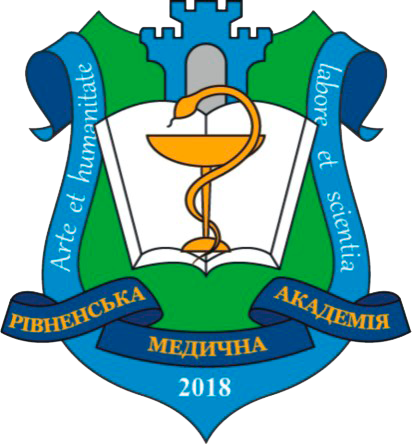POLYCYSTIC OVARY SYNDROME: NEW APPROACHES TO DIAGNOSIS AND TREATMENT
DOI:
https://doi.org/10.32782/health-2025.1.30Keywords:
polycystic ovary syndrome, combined oral contraceptives, antiandrogens, insulin resistance, reproductive health, metabolic syndrome, ultrasound diagnostics, treatment, physical activity, diet therapyAbstract
Polycystic ovary syndrome (PCOS) is one of the most common endocrine disorders in women of reproductive age. It is a multifaceted disease that affects various aspects of health, including reproductive function, metabolism, and psycho- emotional state. The main manifestations of PCOS are menstrual disorders, hirsutism, obesity, ovulation disorders, and increased blood androgen levels. In cases where the disease is not diagnosed and treated in time, PCOS can lead to infertility, metabolic disorders such as insulin resistance, type 2 diabetes, and an increased risk of cardiovascular disease.Recently, scientific advances in medicine have made it possible to improve methods of diagnosing and treating this disease. Modern imaging methods are widely used to diagnose PCOS, including ultrasound diagnostics, which can detect characteristic changes in the ovaries, as well as laboratory tests of hormone levels. The key to diagnosis is a comprehensive approach that includes not only clinical manifestations but also determination of insulin levels and lipid profile.The modern approach to the treatment of PCOS is focused on individualizing therapy depending on clinical manifestations and comorbidities. Treatment includes drug therapy aimed at restoring normal ovulation, reducing androgen levels, and correcting metabolic disorders. Particular attention is paid to the use of combined oral contraceptives, antiandrogenic drugs, and insulin resistance, which is one of the main causes of PCOS. In addition, an important aspect is the correction of nutrition and physical activity, which contributes to weight loss, improvement of metabolic parameters and restoration of the menstrual cycle.Modern studies in the treatment of PCOS include the use of inosinopyrimidine drugs and insulin sensitizers. The latest methods of genetic therapy and the use of biotechnological drugs also open up opportunities for treatment in the future.
References
Cowan, S., Lim, S., Alycia, C., Pirotta, S., Thomson, R., Gibson-Helm, M., Blackmore, R., Naderpoor, N., Bennett, C., Ee, C., Rao, V., Mousa, A., Alesi, S., & Moran, L. (2023). Lifestyle management in polycystic ovary syndrome – beyond diet and physical activity. BMC endocrine disorders, 23(1), 14. https://doi.org/10.1186/s12902-022-01208-y
Joham, A. E., Norman, R. J., Stener-Victorin, E., Legro, R. S., Franks, S., Moran, L. J., Boyle, J., & Teede, H. J. (2022). Polycystic ovary syndrome. The lancet. Diabetes & endocrinology, 10(9), 668–680. https://doi.org/10.1016/S2213-8587(22)00163-2
Chang, S., & Dunaif, A. (2021). Diagnosis of Polycystic Ovary Syndrome: Which Criteria to Use and When?. Endocrinology and metabolism clinics of North America, 50(1), 11–23. https://doi.org/10.1016/j.ecl.2020.10.002
Pugliese, G., de Alteriis, G., Muscogiuri, G., Barrea, L., Verde, L., Zumbolo, F., Colao, A., & Savastano, S. (2023). Liraglutide and polycystic ovary syndrome: is it only a matter of body weight?. Journal of endocrinological investigation, 46(9), 1761–1774. https://doi.org/10.1007/s40618-023-02084-6
Hsueh, A. J., Kawamura, K., Cheng, Y., & Fauser, B. C. (2015). Intraovarian control of early folliculogenesis. Endocrine reviews, 36(1), 1–24. https://doi.org/10.1210/er.2014-1020
Munro, M. G., Balen, A. H., Cho, S., Critchley, H. O. D., Díaz, I., Ferriani, R., Henry, L., Edgar Mocanu, van der Spuy, Z. M., & FIGO Committee on Menstrual Disorders and Related Health Impacts, and FIGO Committee on Reproductive Medicine, Endocrinology, and Infertility (2022). The FIGO Ovulatory Disorders Classification System. Fertility and sterility, 118(4), 768–786. https://doi.org/10.1016/j.fertnstert.2022.07.009
Komorowski, A. S., Hughes, L., Sarkar, P., Aaby, D. A., Kumar, A., Kalra, B., Legro, R. S., & Boots, C. E. (2024). Antimüllerian hormone level predicts ovulation in women with polycystic ovary syndrome treated with clomiphene and metformin. Fertility and sterility, 121(4), 660–668. https://doi.org/10.1016/j.fertnstert.2023.12.031
Karakas S. E. (2017). New biomarkers for diagnosis and management of polycystic ovary syndrome. Clinica chimica acta; international journal of clinical chemistry, 471, 248–253. https://doi.org/10.1016/j.cca.2017.06.009
Papaetis, G. S., Filippou, P. K., Constantinidou, K. G., & Stylianou, C. S. (2020). Liraglutide: New Perspectives for the Treatment of Polycystic Ovary Syndrome. Clinical drug investigation, 40(8), 695–713. https://doi.org/10.1007/s40261-020-00942-2
Silva, I. S., Ferreira, C. N., Costa, L. B. X., Sóter, M. O., Carvalho, L. M. L., de C Albuquerque, J., Sales, M. F., Candido, A. L., Reis, F. M., Veloso, A. A., & Gomes, K. B. (2022). Polycystic ovary syndrome: clinical and laboratory variables related to new phenotypes using machine-learning models. Journal of endocrinological investigation, 45(3), 497–505. https://doi.org/10.1007/s40618-021-01672-8





